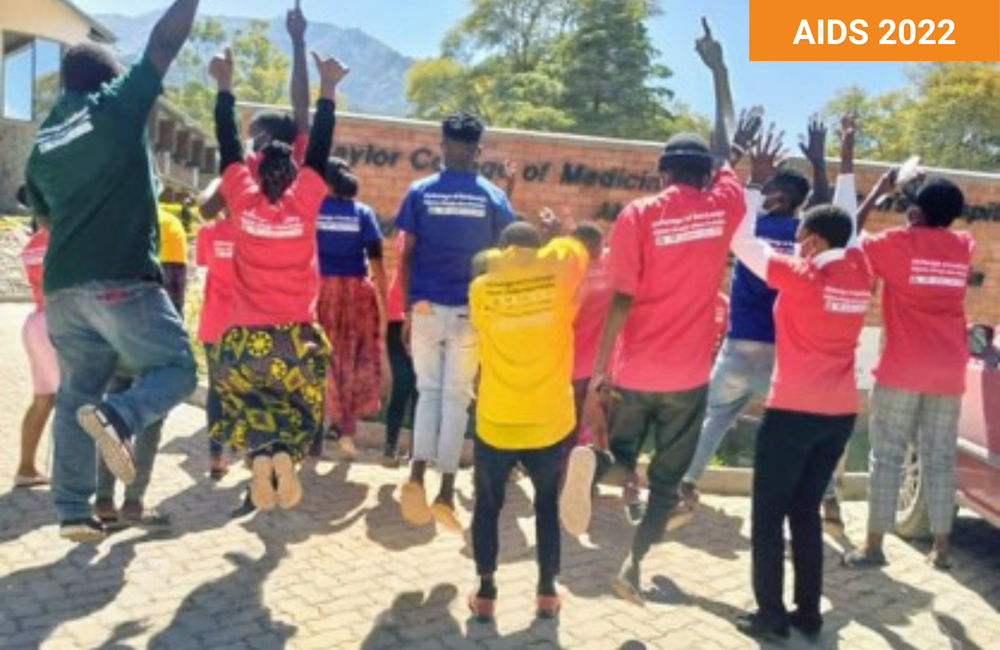
Dolutegravir-based treatment achieves rapid viral suppression in children and adolescents and the vast majority maintain viral suppression, Dr Jason Bacha of Baylor International Pediatric AIDS Initiative reported at the 24th International AIDS Conference (AIDS 2022) in Montreal today.
Ninety-two per cent had a suppressed viral load six months after starting dolutegravir-based treatment or switching to dolutegravir.
The ODYSSEY study reported in 2021 that dolutegravir-based treatment was superior to either efavirenz- or protease inhibitor-based treatment in children and adolescents for first- or second-line treatment, confirming a conditional World Health Organization recommendation in 2019 that dolutegravir-based treatment was preferable for children wherever possible.
However, there has been limited evidence from cohort studies of the impact of moving children from other treatment regimens to dolutegravir-based treatment, or viral suppression in previously untreated children.
Baylor International Pediatric AIDS Initiative (BIPAI), founded in 1996, provides paediatric HIV care in nine countries, including six countries in sub-Saharan Africa. Dr Jason Bacha of Baylor College of Medicine and Texas Children’s Hospital, based in Tanzania, presented results of an analysis of dolutegravir-based treatment at seven BIPAI treatment centres in six countries in sub-Saharan Africa between 2016 and 2021. The study reported outcomes of all children and adolescents (0-19 years) enrolled in care and prescribed a dolutegravir-containing regimen.
The study reported on 11,799 children and adolescents who received dolutegravir-based treatment during the follow-up period. Fifty-six per cent were female, and the majority were 10 years of age or older (10-14 years, 39%, 15-19 years, 40%). Only 2.6% were under 5 years old.
More than three-quarters (78%) were taking dolutegravir after switching from a previous regimen. Forty-four per cent switched from non-nucleoside reverse transcriptase inhibitor (NNRTI)-based treatment and 34% from protease inhibitor-based treatment. Twenty per cent started treatment for the first time.
The majority (61%) took dolutegravir with tenofovir disoproxil and lamivudine (TLD); 32% took dolutegravir with abacavir and lamivudine, 5% with zidovudine and lamivudine.
Study participants were followed for an average of 22 months after starting dolutegravir. During the follow-up period 4.7% transferred their care to other providers and 1.6% either died or were lost to follow-up. The loss to follow-up rate in this study is remarkably low – only 145 participants were lost to follow-up at seven centres over five years. Dr Bacha told aidsmap that implementing multi-month prescribing and ensuring that robust systems are in place to trace patients who are lost to follow-up explains the high retention rates. Adolescent and young adult peer support networks also play a role in locating patients in their neighbourhoods who are lost to follow-up, he said.
Six months after starting dolutegravir-based treatment, 92% of participants had a viral load below 1000, the benchmark for viral suppression in this study. There was little change in the proportion who were virally suppressed over time; of 2074 participants who underwent viral load testing after 24 months on treatment, 91% had a viral load below 1000.
There was little difference in the rate of viral suppression, either at 6 months after starting treatment or subsequently by gender or age, with the exception of 10-14 year olds who had been followed for 2 to 2.5 years, where viral suppression declined by around 5%. Dr Bacha pointed out that for the majority of sites and participants, this time point reflected the peak of the COVID-19 pandemic in participating countries.
The study also looked at the impact of changing a single medication and maintaining the existing nucleoside backbone. A single-medication substitution took place in the treatment regimens of 3738 participants. Six-month follow-up showed a small but statistically significant reduction in viral suppression after dolutegravir replaced a previous agent (-1.8%, p<0.01), but this difference disappeared by 12 months after switching.
Only 210 participants had unsuppressed viral load (>1000) at the time of switching. Eighty per cent had a suppressed viral load at their first viral load test after switching and this rate of suppression was maintained at subsequent viral load tests in those with longer follow-up. Dr Bacha said that the study findings showed that dolutegravir-based treatment achieved and consistently maintained viral suppression in children and adolescents in real-world settings across southern and eastern Africa and support the ongoing roll-out of dolutegravir-based treatment in this population.
Bacha J et al. The fast and the continuous: dolutegravir-based antiretroviral therapy achieves impressive viral load suppression in CALHIV in the short- and long-term. 24th International AIDS Conference, Montreal, abstract 2849, 2022.
